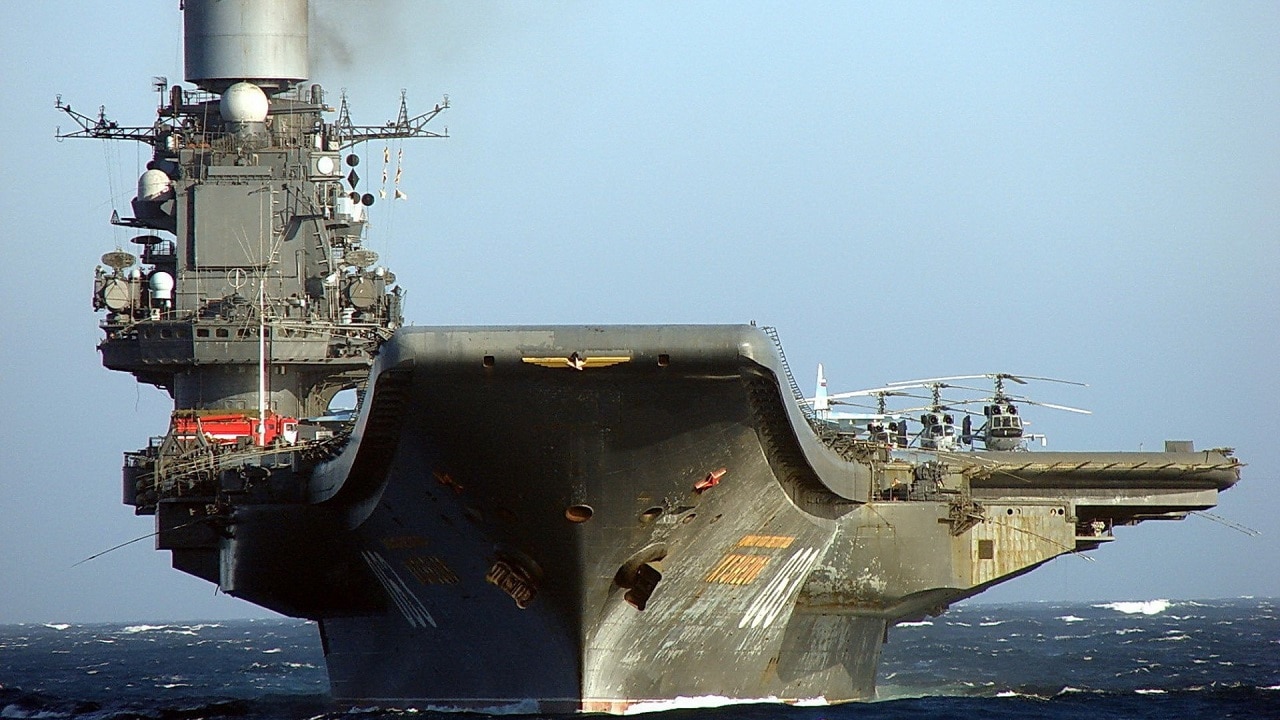The story of Russia’s lone aircraft carrier is almost as confusing as it is complex, given the condition of the ship, future prognosis and strategic implications for Russia’s military posture.
Reviving a Cursed and Outdated Carrier
The Admiral Kuznetsov carrier has been in drydock since 2018 for extensive repairs and re-fitting for continued service and is reportedly slated to return to service next year. The ship, which first launched in 1985, began as part of the Soviet Navy as a first step in a plan to deploy a two-carrier fleet.
However, the subsequent collapse of the Soviet Union in the early 90s derailed plans to complete a second carrier. As a result, the would-be Varyag carrier was sold to China and became China’s first carrier, called the Lioaning. Russia never completed and deployed its second carrier but instead helped the People’s Liberation Navy jump-start a massive Naval expansion.
Not only did Russian plans for the fleet implode, the Admiral Kuznetsov itself appears to have encountered extremely significant maintenance and functionality challenges. The ship has already been in drydock for as long as five years, and recent news reports say the damage and corrosion to the carrier involves extreme erosion of its metal structures.
Pravda.com reports that Russia’s only carrier will not be in a condition where it can return to deployment.
“Ship repairmen warned the military that the condition of Admiral Kuznetsov does not allow it to be deployed due to the high probability that it would sink or capsize. During the examination, it was revealed that the metal structures below the third deck of the ship were significantly corroded. The holds are filled with muddy water, which makes it impossible to examine the ship in detail from the inside,” the Pravda paper states.
The paper says Russian weapons developers have been beset with infighting and blaming various decision-makers instead of focusing more sharply on fully preparing the aircraft carrier to return. The Admiral Kznetsov has been experiencing additional problems beyond its serious corrosion and damage.
The repair process has been hampered by several extremely problematic accidents. In 2019 there was an engine-room fire on the carrier, which resulted in one death and several injuries. The return timeline, therefore, has been adjusted or modified a few times to extend the ship’s anticipated return to 2024.
Russia plans to deploy and sail the ship for another 15 years after its return to service, however that seems to very much be in question.
Does Russia have Global Naval Ambitions?
Problems with Russia’s carrier seem to align with other significant tactical and strategic nuances.
To what extent does Russia truly wish to deploy a Navy that is substantial and lethal enough to project power beyond its borders? It seems extremely unlikely that the Russian Navy can position itself to be a large, influential global Naval power. That requires more of a U.S.-like fleet of multiple carriers. China is fast-tracking its ability to compete with the U.S. in this fashion. Is it realistic and even being pursued by Russia?
Perhaps not, however there are clear reasons why Russia would want a carrier if even for regional or limited purposes. Should the carrier return to service with any carrier air wing, it might position Russia to hold NATO allies along the Black Sea at risk of attack and also defend its airspace from the ocean. Russia clearly appears to have regional ambitions in the Black Sea, which includes coastal borders from Bulgaria, Romania, and Turkey, among others.
Of course Russia and Ukraine border the Black Sea as well, and the U.S. is known to at times operate warships in international waters in the area. An ability to launch cruise missiles or fighter jets from offshore does present a credible threat to Ukraine and other NATO allies, something which likely explains why Ukraine has had some success destroying Russian warships with land-fired missiles.
Russia’s Arctic Push
The other significant concern likely relates to Russia’s Northern Sea Route and Arctic ambitions. In recent years, Russia has been adding assets, bases, and force concentrations in the Arctic in what appears to be a clear, focused effort to massively expand influence.
Not only does the Northern Sea Route along Russia’s borders enable direct and achievable access to the Arctic region, but Russia is known to operate a high-number of ice-breakers able to support carrier travel. Russia likely knows that if it wishes to truly establish and defend its Arctic presence, something of enormous strategic, geopolitical and tactical advantage, it may need a carrier presence in the region as well.
Overall, Russia’s Navy is not only smaller but also believed by many observers to be limited in its ability to attack ocean and land targets from surface ships. Should Russia have budget flexibility and industrial capacity, it seems there are a number of key areas where its posture might benefit greatly from the presence of more aircraft carriers.
Russia’s submarines, by contrast, are known to be both extremely advanced and threatening to U.S. and NATO land and naval forces. However, the country’s inability to mount and project any real kind of surface Naval warfighting power will place massive limitations on the kinds of missions it can accomplish.
MORE: Zumwalt – The Navy’s Stealth Destroyer Firing Hypersonic Missiles?
MORE: Could the U.S. Navy Bring Back Battleships?
Kris Osborn is the Military Affairs Editor of 19FortyFive and President of Warrior Maven – Center for Military Modernization. Osborn previously served at the Pentagon as a Highly Qualified Expert with the Office of the Assistant Secretary of the Army—Acquisition, Logistics & Technology. Osborn has also worked as an anchor and on-air military specialist at national TV networks. He has appeared as a guest military expert on Fox News, MSNBC, The Military Channel, and The History Channel. He also has a Masters Degree in Comparative Literature from Columbia University.

